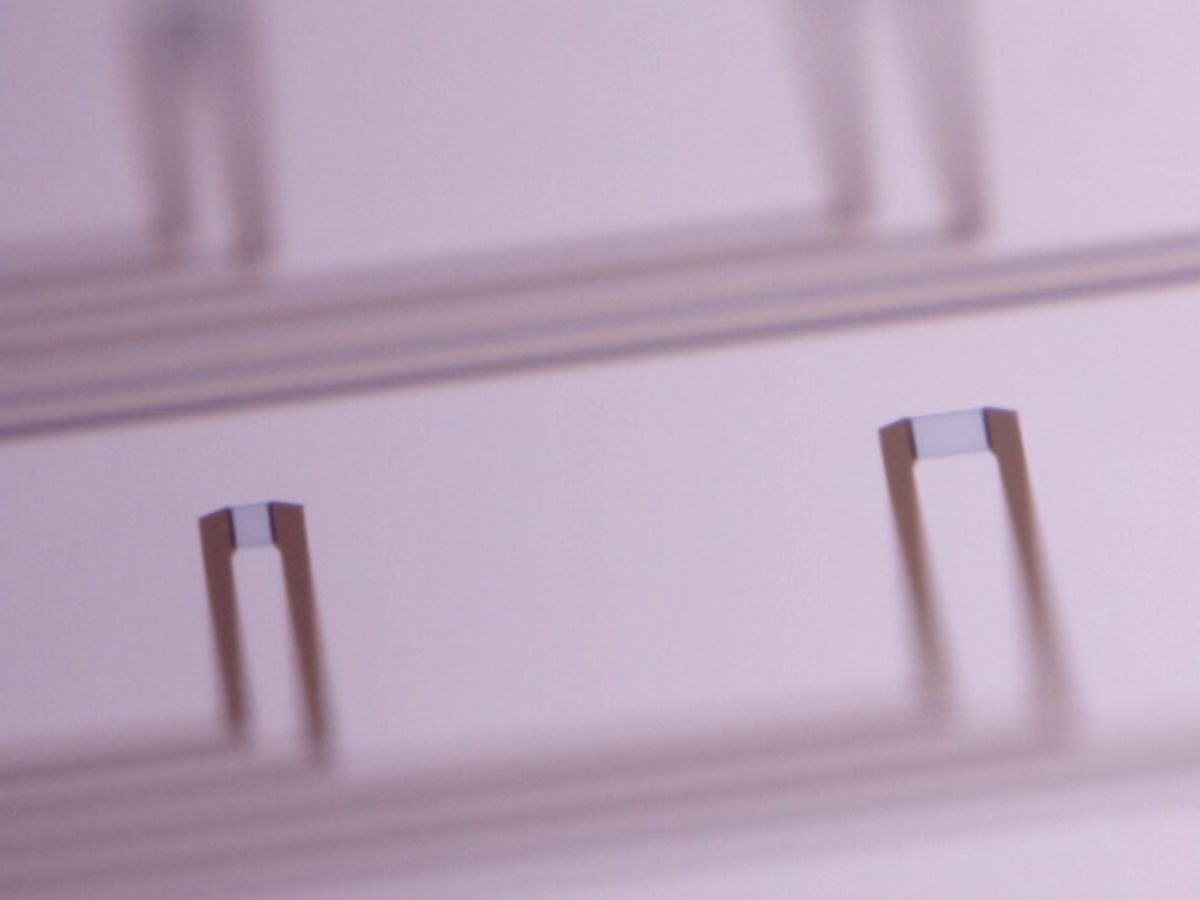A new type of implantable electrode can get much more sensitive readings of brain waves and cost substantially less, according to a scientist studying the device. Organic electrochemical transistors (OECTs) consist of conductive polymers and liquid electrolytes, which could make for an easy interface between, say, the surface of the brain and conventional silicon electronics.
Device physicists have been studying OECTs since the early part of this century, says George Malliaras, head of the bioelectronics department at École Nationale Supérieure des Mines de Saint-Étienne, France, but they don’t yet fully understand how they work. In a research published in Science Advances last week, Malliaras and his colleagues determined that the performance of the device is directly related to the thickness of the polymer channel, a piece of information that will help in designing these electrodes.
In a standard silicon-based electrode, the transconductance—the measure of how the device amplifies signals from the brain—is determined by the surface area of the electrode. In an array of electrodes to be fitted onto a human skull or the surface of a rat’s brain, it’s hard to increase the area of the electrode by very much. Malliaras and his team found that transconductance in the OECT is determined not by area but by thickness. OECTs work by the exchange of ions from the electrolyte into the polymer; that means devices with thicker polymer channels work better than thinner ones, because the whole bulk of the device, and not just the surface, comes into play.
They placed two OECT electrodes—one 230 nanometers thick, the other 870 nm—on the skull of a volunteer and took a standard electroencephalogram reading. The transconductance on the thicker electrode was about twice what it was on the thinner one. Testing other sizes, they found thicker channels worked better, even when the channel was slightly more than 1 micrometer thick.
Because it takes advantage of the transistor volume instead of just the surface, “a very small change in electrical potential can be amplified by the device into a very large change in current,” says Malliaras. He says the OECT is about two orders of magnitude more sensitive than a silicon-based device.
Because the devices are polymer based, they can be fabricated using printing processes, which should make them cost just a few cents each, as opposed to several dollars for conventional electrodes, Malliaras says. He expects electrodes for use on the outside of the body could be available in the near future. Implantable devices would need to go through government regulatory approval, and thus would take longer.
Neil Savage is a freelance science and technology writer based in Lowell, Mass., and a frequent contributor to IEEE Spectrum. His topics of interest include photonics, physics, computing, materials science, and semiconductors. His most recent article, “Tiny Satellites Could Distribute Quantum Keys,” describes an experiment in which cryptographic keys were distributed from satellites released from the International Space Station. He serves on the steering committee of New England Science Writers.



